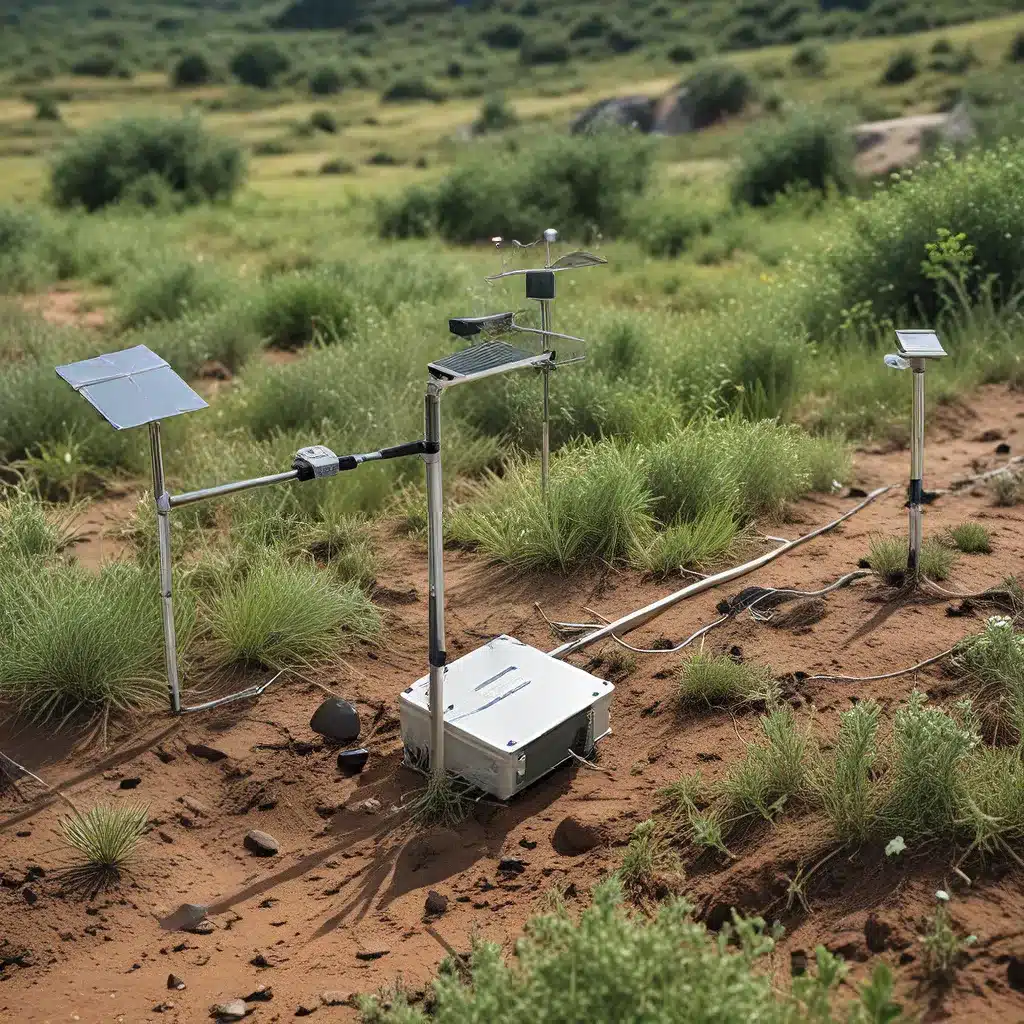
Navigating the Complexities of Sensor Network Design for the Internet of Things
As the Internet of Things (IoT) continues to revolutionize the way we interact with our environment, the design and implementation of distributed sensor networks have become increasingly crucial. These interconnected systems of sensors, gateways, and data processing platforms enable the real-time monitoring and analysis of various environmental parameters, from air quality to water levels, empowering informed decision-making and proactive responses.
Researchers have made significant strides in developing distributed sensor algorithms that prioritize resilience and scalability, two essential characteristics for the successful deployment of IoT-based environmental monitoring solutions. In this article, we’ll explore the key aspects of sensor network design, delve into the applications of these technologies, and address critical considerations around security and energy management.
Designing Resilient and Scalable Sensor Networks
At the heart of effective distributed sensor networks lie robust algorithms that can adapt to changing environmental conditions, withstand potential disruptions, and seamlessly scale to accommodate growing data volumes and network complexities.
Sandia National Laboratories’ Renewable and Distributed Systems Integration (RDSI) program has been at the forefront of this research, developing innovative solutions to address the challenges faced by the nation’s electricity systems. By leveraging advanced grid modeling and physical and cybersecurity technologies, the RDSI team has made significant contributions to the design and implementation of resilient and scalable sensor networks**.
One such critical aspect is the unintentional islanding detection, a problem that has plagued the industry for decades. Sandia’s research on this topic, including the development of the Sandia Frequency Shift algorithm, has been widely adopted by the industry, helping to ensure the safety and reliability of distributed energy resources (DERs) integration.
Moreover, Sandia’s work on solar forecasting has led to the creation of an accessible, open-source framework that enables the evaluation of irradiance, solar power, and net-load forecasts, providing a robust benchmark for the industry. This framework not only enhances the accuracy of renewable energy predictions but also fosters transparency and collaboration among stakeholders.
Securing Sensor Networks and IoT Applications
As the deployment of sensor networks and IoT devices continues to accelerate, the need for robust security measures has become increasingly paramount. Cyber threats, such as unauthorized access, data breaches, and malicious tampering, pose significant risks to the integrity and availability of these interconnected systems.
Sandia’s researchers have developed a comprehensive threat model specifically tailored to the vehicle charging infrastructure, a critical component of the IoT ecosystem. This model not only assesses the potential cyber risks but also provides valuable insights to stakeholders, enabling them to enhance grid security and resilience.
Additionally, Sandia’s work on securing inverter communications has led to the development of a Proactive Intrusion Detection and Mitigation System (PIDMS) that can sense when inverters are under attack and deploy corrective actions to prevent and mitigate the impact of such attacks. This innovative approach helps to safeguard the integrity of distributed energy resources and the broader power grid.
Optimizing Energy Management in Sensor Networks
Energy efficiency is a crucial consideration in the design and deployment of sensor networks, as these systems often operate in remote or resource-constrained environments. Inefficient energy management can lead to reduced battery life, limited sensor coverage, and disruptions in data collection.
Sandia’s Renewable and Distributed Systems Integration (RDSI) program has made significant strides in addressing these challenges. Through the development of advanced microgrid research and the Microgrid Design Toolkit (MDT), the RDSI team has provided valuable tools and insights to optimize the energy performance and reliability of sensor networks.
The MDT, a visual design and trade-space optimization capability, helps planners and designers evaluate the performance and reliability of candidate microgrid designs, ensuring that the energy infrastructure supporting sensor networks is resilient and efficient.
Moreover, Sandia’s work on DC microgrids in partnership with Emera Energy has demonstrated the viability of scalable, low-cost, and resilient distributed energy systems, which can seamlessly integrate with sensor networks and IoT applications. This innovative approach not only enhances energy efficiency but also improves the overall safety and reliability of the power infrastructure.
Sensor Networks and IoT in Action: Real-World Applications
The advancements in distributed sensor algorithms, security measures, and energy management strategies have paved the way for a wide range of real-world applications that leverage the power of IoT and sensor networks.
In the environmental monitoring domain, sensor networks are being deployed to track air quality, monitor water levels, and detect environmental anomalies in real-time. These solutions empower decision-makers and communities to take proactive measures, mitigate risks, and ensure the sustainable management of natural resources.
Furthermore, the integration of sensor networks with renewable energy systems and microgrids has revolutionized the way we approach grid resilience and reliability. By aggregating distributed energy resources into secure and reliable virtual power plants, sensor networks can provide voltage and frequency regulation, as well as other grid support functions, ensuring the stability and efficiency of the power infrastructure.
The potential applications of sensor networks and IoT technologies extend far beyond environmental monitoring and energy management. In the realm of smart cities, these interconnected systems are enabling traffic optimization, waste management, and public safety initiatives, improving the quality of life for urban dwellers.
Embracing the Future of Sensor Networks and IoT
As the world becomes increasingly interconnected, the importance of distributed sensor networks and IoT technologies cannot be overstated. The advancements in resilient and scalable sensor algorithms, security measures, and energy optimization strategies have positioned these technologies as pivotal enablers of a sustainable and resilient future.
By harnessing the power of sensor networks, we can unlock new levels of environmental awareness, resource management, and community resilience, paving the way for a smarter, more livable world. As we continue to explore the vast potential of these technologies, the future of sensor networks and IoT holds the promise of a more connected, efficient, and responsive ecosystem that serves the needs of both individuals and communities.